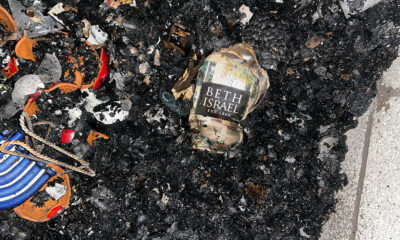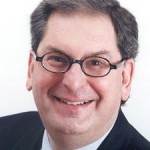Uncategorized
Universities Must Be Forced to Address Antisemitism
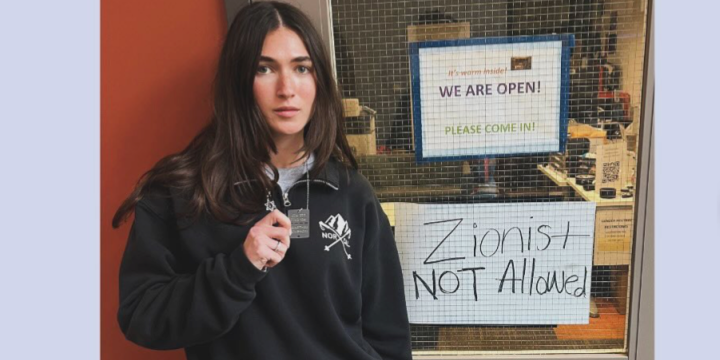
University of California, Santa Barbara student body president Tessa Veksler on Feb. 26, 2024. Photo: Instagram
JNS.org – “Never would I have imagined that I’d need to fight for my right to exist on campus,” laments Shabbos Kestenbaum, a student at Harvard University who is suing the school because “antisemitism is out of control.”
Jewish students have suffered an unrelenting explosion of hate on American higher education campuses—so far with little relief. They have endured antisemitic rhetoric, intimidation, cancellation and violence. But those charged with keeping campuses safe—whether administrators who govern student and faculty behavior or federal agencies responsible for ensuring that schools adhere to civil rights protections—are failing in their jobs.
Many Jewish students have complained to their colleges’ administrators about the injustices. But instead of responding with measures to ensure Jewish students’ safety—like stopping pro-Hamas protestors from hijacking campuses or expelling militants who incite Jew-hatred— administrators have largely shown indifference. In some cases, college authorities have made things worse for Jewish students by appeasing the riotous, pro-Hamas mobs who have been primary perpetrators of Jew-hatred on campus.
Snubbed by college administrators, Jewish students and their supporters have appealed for federal protection, filing Title VI complaints with the US Department of Education’s Office of Civil Rights (OCR), the body tasked with enforcing protections under the Civil Rights Act. Unfortunately, the OCR, which has the power to levy severe financial punishments against colleges that neglect students’ Title VI rights, has so far rewarded negligent universities with little more than slaps on the wrist.
Until college and university boards of trustees begin hiring administrators committed to Jewish students’ safety—and until the OCR begins seriously punishing antisemitic perpetrators—we can expect no respite. Safe to say, colleges and universities run by arrogant, apathetic administrators will not change until their jobs and schools’ survival are threatened.
College/university administrators don’t take antisemitism seriously. Their reactions to Jewish students raising concerns about Jew-hatred range from indifference to outright hostility. For example, when Mohammed Al-Kurd, who the Anti-Defamation League says has a record of “unvarnished, vicious antisemitism,” came to speak at Harvard, Shabbos Kestenbaum and other Jewish students complained to administrators.
Rather than cancel Al-Kurd’s appearance, which would have been the appropriate action, the administrators ignored the students’ complaints. “Harvard’s silence was deafening,” Kestenbaum wrote in Newsweek. Kestenbaum said he “repeatedly” expressed concerns to administrators about the antisemitism he experienced, but as his lawsuit alleges, “evidence of uncontrolled discrimination and harassment fell on deaf ears.”
Administrators at Columbia University reacted to Jewish students’ complaints about antisemitism even more cynically. In fact, during an alumni event, several administrators exchanged text messages mocking Jewish students, calling them “privileged” and “difficult to listen to.”
When Rep. Elise Stefanik (R-N.Y.) asked the presidents of Harvard, MIT and the University of Pennsylvania if calling for genocide against Jews violated their schools’ codes of conduct, none could say “yes.” The presidents of Harvard and UPenn have since resigned. Good riddance.
Some college/university administrators have outrageously granted concessions to pro-Hamas students. For instance, Northwestern University agreed to contact potential employers of students who caused campus disruptions to insist they be hired, create a segregated dormitory hall exclusively for Middle Eastern, North African and Muslim students, and form a new investment committee in which anti-Zionists could wield undue influence. Brown University agreed to hold a referendum on divestment from Israel in October.
Similar appeasements were announced at other colleges and universities, including Rutgers, Johns Hopkins, the University of Minnesota and the University of California Riverside.
So far, OCR has failed to take concrete action against antisemitism on campus. This is evident in recent decisions involving the City University of New York (CUNY) and the University of Michigan. CUNY was ordered to conduct more investigations into Title VI complaints and report further developments to Washington, provide more employee and campus security officer training, and issue “climate surveys” to students.
The University of Michigan also committed to a “climate survey,” as well as to reviewing its case files for each report of discrimination covered by Title VI during the 2023-2024 school year and reporting to the OCR on its responses to reports of discrimination for the next two school years.
Neither institution was penalized financially, even though the Department of Education has the power to withhold federal funds, which most colleges and universities depend on. There are now 149 pending investigations into campus antisemitism at OCR. If these investigations yield toothless results similar to those of CUNY and Michigan, it is highly unlikely that colleges and universities will improve how they deal with antisemitism.
Putting an end to skyrocketing antisemitism on campus involves three things.
First, donors and governments at every level should withhold funds from colleges that fail to hire administrators who will take antisemitism as seriously as they take pronoun offenses or racism directed at people of color.
Second, the OCR must mete out serious consequences to Title VI violators in the form of funding cuts. This may require legislation that specifically mandates withdrawing funding from offending parties. A bill recently introduced by Rep. Nicole Malliotakis (R-N.Y.)—the University Accountability Act—may be ideal, as it is designed to financially penalize institutions that don’t crack down on antisemitism.
Third, if OCR won’t act, Jewish students and their supporters should turn to the courts. Lori Lowenthal Marcus, the legal director of the Deborah Project, a public-interest Jewish law firm, argues that the CUNY settlement demonstrates the futility of going to OCR and that going to court is more likely to produce “a clearly delineated and productive result,” such as punitive and compensatory fines. As of late May, at least 14 colleges and universities are facing lawsuits over their handling of antisemitism on campus since Hamas’s Oct. 7 massacre.
As long as college administrators are allowed to ignore antisemitism on campus and as long as OCR and other government institutions fall short in punishing Jew-hatred, antisemitism will continue to plague Jewish students.
The post Universities Must Be Forced to Address Antisemitism first appeared on Algemeiner.com.
Uncategorized
Fire at Mississippi’s largest synagogue under federal investigation after arrest
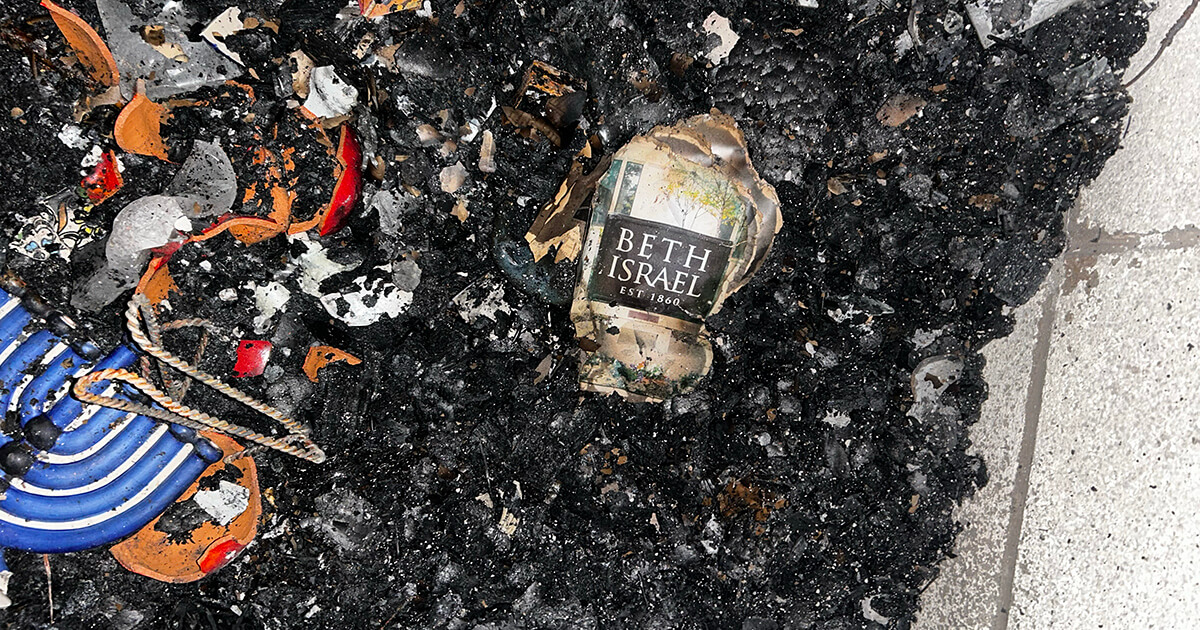
A suspect is in custody as authorities investigate a weekend fire that damaged Mississippi’s largest synagogue, which has been attacked before.
The fire broke out around 3 a.m. Saturday at Beth Israel Congregation, the only synagogue in Jackson, the state capital. Investigators said the blaze originated in the synagogue’s library, burning it and the offices. Soot and smoke damaged the rest of the building, including the sanctuary.
Two of the synagogue’s Torahs, kept in the library, were burned in the fire; another five in the sanctuary were damaged. An additional Torah, rescued from the Holocaust, was behind a glass case and survived the fire.
“At this time, we do have a person in custody for the fire,” said Division Fire Chief Charles Felton, who is overseeing the investigation. The arrest was made at about 8 p.m. Saturday, he said.
Felton said the FBI is now involved and is expected to pursue federal charges, including determining whether the fire qualifies as a hate crime. Local authorities made the initial arrest before federal investigators stepped in, he said.
A reporter who was inside the building before federal authorities secured the scene described extensive damage. Allen Siegler, a reporter with Mississippi Today, said the interior was “very dark and ashen.”
“It was wet — puddles of ashes,” Siegler told the Forward.
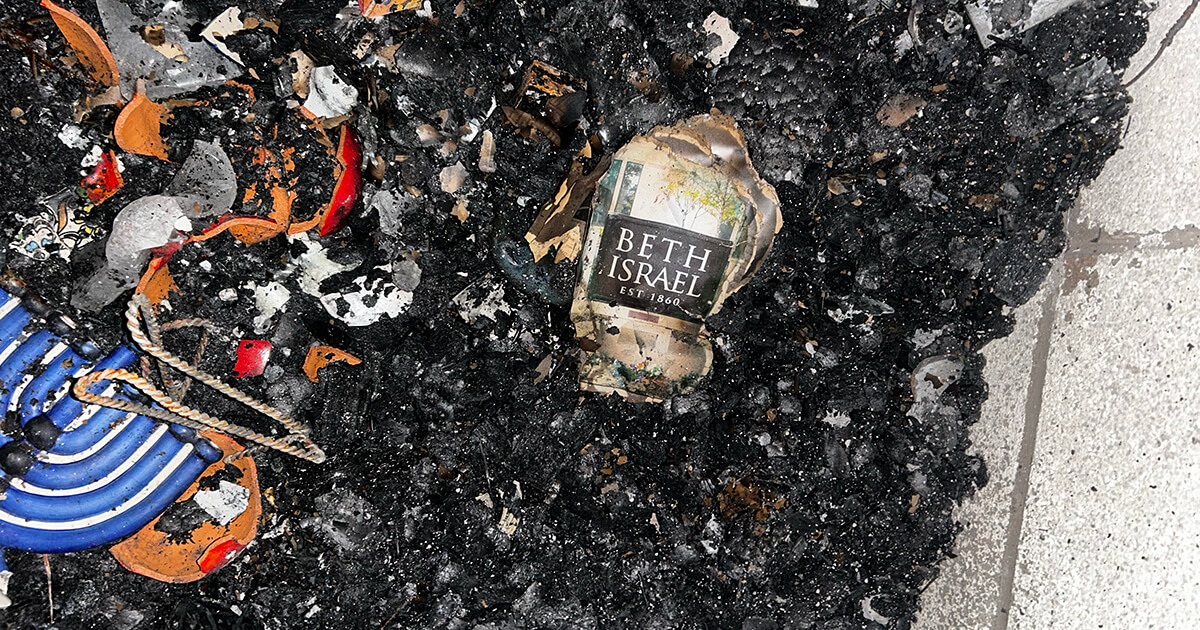
Jackson Mayor John Horhn said the fire was an attack not only on the Jewish community, but on the city itself.
“Acts of antisemitism, racism, and religious hatred are attacks on Jackson as a whole and will be treated as acts of terror against residents’ safety and freedom to worship,” Horhn said in a statement. “Jackson stands with Beth Israel and the Jewish community, and we’ll do everything we can to support them and hold accountable anyone who tries to spread fear and hate here.”
A congregation shaped by fire — and defiance
Beth Israel Congregation, which counts around 150 member families, has anchored Jewish life in Jackson since the Civil War, its history closely tracking both the growth of the city and the persistence of a small but visible Jewish community in Mississippi’s capital.
Founded in the early 1860s, the congregation built Mississippi’s first synagogue — a modest structure on South State Street that doubled as a schoolhouse. It burned in an 1874 fire, a common fate of 19th century wooden buildings, though the cause of the fire is not recorded. The congregation built a new brick structure on the same site, dedicated in 1875.
As Jewish families moved within Jackson, Beth Israel moved with them, relocating first to Woodrow Wilson Avenue and, in the 1960s, to its current home in northeast Jackson.
By the mid-20th century, Beth Israel had become the largest Jewish congregation in the state and a familiar civic presence in a predominantly Christian city — a visibility that brought both belonging and risk.
In September 1967, Ku Klux Klan members bombed the synagogue just weeks after the building was dedicated, damaging the rabbi’s office and library. The home of Rabbi Perry Nussbaum, a vocal supporter of the civil rights movement who had helped the Freedom Riders, was also bombed shortly afterward. No one was injured, and the congregation held High Holiday services in the building that same year.
Rabbi Valerie Cohen, who led Beth Israel from 2003 to 2014 and is now at Temple Emanuel Sinai in Worcester, Massachusetts, said the echoes between past and present were impossible to miss.
“The majority of the damage is in the same place as the bombing,” said Cohen, 54.
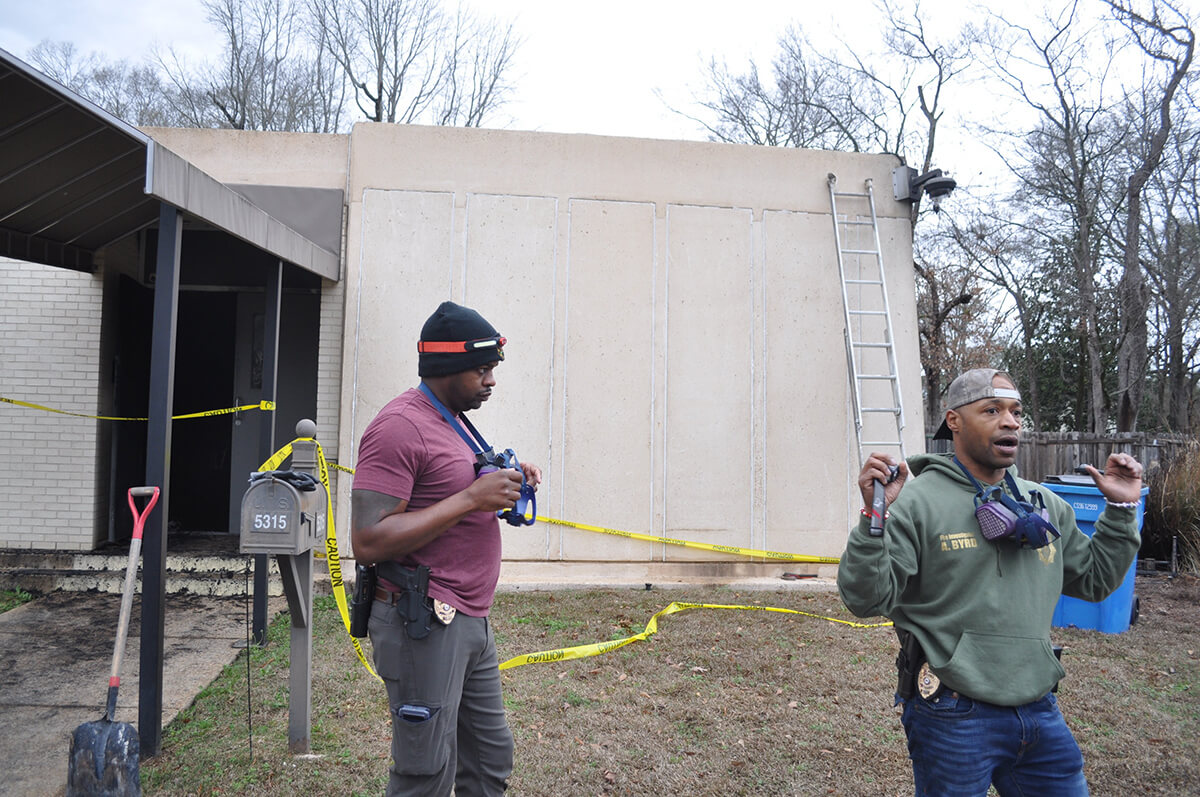
The fire felt especially disorienting, she said, because she had been inside the building just days earlier.
“That made this moment sad and surreal and awful,” Cohen said. “I was just there last Shabbat, officiating at a wedding for one of my bar mitzvah students from there that is all grown up now. I participated in the Torah study on Saturday morning in the library, led by their current spiritual leader.”
Cohen described Beth Israel as “very resilient throughout the years” and “very integral” to the Jackson community, noting that many non-Jewish residents know the synagogue through its longtime preschool and annual bazaar.
Despite the damage, congregants say Jewish life in Jackson will continue.
Tamar Sharp, 67, a member of Beth Israel since 2006, is scheduled to celebrate her adult bat mitzvah this coming Shabbat — even if it must be held in a borrowed space with a borrowed Torah.
“Absolutely,” Sharp said. “The show must go on.”
The post Fire at Mississippi’s largest synagogue under federal investigation after arrest appeared first on The Forward.
Uncategorized
An arsonist torched a Mississippi synagogue. It feels hauntingly familiar.
A Mississippi synagogue has just been destroyed by hateful actors – and it is not the first time.
I am talking about what happened Saturday morning. An arsonist set fire to the historic Beth Israel Congregation in Jackson, Mississippi. By the time the flames were extinguished, much of the building was destroyed and rendered unusable.
According to reporting by Mississippi Insider, the fire tore through parts of the building, damaging sacred objects, prayer books, and decades of communal memory. Firefighters were able to prevent a total collapse, but the synagogue — founded in 1860 and one of the oldest Jewish congregations in the state — will not be able to function as a house of worship for the foreseeable future.
I am experiencing historical déjà vu. On September 18, 1967, white supremacists bombed Beth Israel in retaliation for the civil rights activism of its rabbi, Perry Nussbaum. Rabbi Nussbaum was a visible ally of Black leaders in Jackson, including Medgar Evers, and his moral courage made him a target. Shortly thereafter, they bombed Rabbi Nussbaum’s home as well. He survived. The building was rebuilt.
Those attacks followed a grim and unmistakable American tradition. For several years, I served The Temple in Atlanta, and congregants still spoke in hushed tones about where they were on the morning of October 12, 1958, when The Temple was bombed by white supremacists angered by Rabbi Jacob Rothschild’s outspoken support for civil rights. That bombing is often remembered as the most infamous attack on a religious building in American history, but what many forget is that it did not stand alone. In the year leading up to it, synagogues in Miami, Nashville, Birmingham, and Jacksonville were also bombed.
Synagogues have succumbed to flames throughout Jewish history. On Kristallnacht, November 9–10, 1938, the Nazis and their collaborators burned or destroyed more than 1,400 synagogues across Germany and Austria. That night was not a spontaneous riot; it was a dress rehearsal for annihilation. And the line of fire stretches further back still, to the Roman destruction of the Second Temple in 70 CE, and before that to the Babylonian destruction of the First Temple in 586 BCE.
Beth Israel is not just a building. It is a witness. It is a repository of Jewish persistence in a place where Jews have lived as a tiny minority for generations, carving out space for faith, community, and civic engagement in the Deep South. To see it burned is to feel a familiar Jewish nausea, the sickening recognition that this story has been told before — far too many times.
Beth Israel in Jackson burned on Shabbat, coinciding with the Torah portion of Shemot, as we read in the book of Exodus about the burning bush — a bush that burns but is not consumed by flames. Such is Jewish history.
An American tradition?
What disturbs me most is not only the act itself, but its familiarity.
I mentioned my time in Atlanta. I also served as a rabbi in Columbus, Georgia. When I look back on my career, I realize that I have spent no fewer than twenty years serving Jewish communities in the South — and yes, I include South Florida in that number.
During those years, I learned a profound respect for Jews in small Southern communities who tenaciously maintain their synagogues in the face of demographic shrinkage, economic pressure, and cultural isolation. When those synagogues close, as too many do, the community must make sure that there are homes for their Torah scrolls and ritual objects. This is sacred labor, often carried out quietly and without recognition.
Most Americans do not realize that a surprisingly large percentage of Reform synagogues in this country look far more like Beth Israel in Jackson than like the caricature of the large, affluent suburban congregation. The heart of Reform Judaism beats in small, struggling, historic communities. That is why the fire in Jackson sears the Jewish soul. It could be any synagogue. And in my darkest fears, I believe there will be more.
Right about now, some of you are saying, “Well, what did you expect? Look at what has happened in Gaza, and the Palestinians, and Netanyahu…”
If you are saying this, your foolishness betrays you. No one vandalizes Russian Orthodox churches in America because of Vladimir Putin. No one boycotts Chinese restaurants because of China’s persecution of the Uyghurs. And no one should ever suggest that victims of violent bigotry are responsible for the hatred directed at them. We would never say this about any other group. We must not say it about Jews.
The raw truth is what historian Pamela Nadell names so clearly in her indispensable new book, Antisemitism: An American Tradition.
Pamela does not only name and record the incidents of antisemitism that have occurred over the years. She shows that antisemitism is, in fact, an American tradition. It has always been with us, sometimes polite, sometimes lethal, often lying dormant like an autoimmune disease, flaring up when fear, desperation, and social change demand a scapegoat.
An issue for all faiths
Not only because of what has happened, but because of what I fear will follow — not only imitation, but silence. As I write these words, I do not know whether this arson will merit national attention, whether it will appear in The New York Times or vanish into the vast archive of shrugged-off hate. I hope my fears are wrong.
I also wonder who will speak. Will our most trusted chroniclers of American moral life take notice? I admire historian Heather Cox Richardson deeply, and I hope she will address antisemitism with the same moral clarity she brings to other threats to democracy. Because it cannot be that even in the warmest of hearts there is a cold spot for the Jews.
I often think of an artifact I have seen at the United States Holocaust Memorial Museum in Washington, D.C. It is a Torah ark ripped from the wall of a synagogue in Essen, Germany, hurled into the street. Carved into it are the words, “Know before whom you stand.” But those words were deliberately chiseled away by a vandal, as if to declare that there is no one before whom we stand, no God whose presence must be reckoned with — because we are destroying the place where that God so often comes to dwell.
That is why I am turning now to my readers who are not Jewish. I am calling on Christian pastors, Muslim imams, and religious leaders of every tradition to denounce what happened in Jackson this coming weekend. Because just as we rightly said when Black churches were burned, any attack on a house of worship is not only an attack on one community. It is an assault on the very idea that holiness has a place in public life.
And that, ultimately, is an attack on God.
The post An arsonist torched a Mississippi synagogue. It feels hauntingly familiar. appeared first on The Forward.
Uncategorized
Can Breads Bakery workers really demand that the Israeli owners cut ties with Israel? Labor experts weigh in.
(New York Jewish Week) — The news that workers at Breads Bakery, an Israeli chain in New York City, were demanding “an end to this company’s support of the genocide happening in Palestine” as part of a union push has triggered concerns among those worried about surging anti-Israel sentiment in the United States.
“This is going to spread,” Deborah Lipstadt, the former United States special envoy for monitoring and combating antisemitism, wrote on X Thursday. “This is not spontaneous, This is part of an effort to marginalize Jews and Israel.”
But is an Israel boycott as a union demand even possible to achieve? Do workers have rights when it comes to protecting their beliefs about Israel? What role are unions playing in anti-Israel advocacy? And what might happen next at Breads?
To answer these questions, we reached out to two labor scholars — Harry C. Katz, the director of the Scheinman Institute on Conflict Resolution at Cornell University, and Samuel Estreicher, an attorney and scholar on labor and employment law and arbitration law at New York University. We also visited a rally by Breads’ supporters on the Upper West Side on Friday afternoon.
Here’s what we learned.
Is it common for workers to press for political concessions as part of their unionization efforts?
The Breaking Breads workers are doing something unusual, Katz said. He said he was not aware of other examples of employees making demands related to Israel as part of a unionization effort.
“There are unions who have taken out political stances, but the stances are ‘we oppose the Netanyahu government,’ or ‘we oppose the invasion of Gaza,’ ‘we are sympathetic to BDS,’” he said. “They’re allowed to take that stance, but they have not done what you’re asking about.”
Of course, unions can and do use their might to advance political agendas. But that often happens in the advocacy space, with unions reminding decision-makers that they represent a powerful voting bloc, not in bargaining within individual units.
The insertion of Israel demands in a unionization announcement reflects an anti-Israel swing within swaths of organized labor in the United States and beyond.
In December 2023, United Auto Workers, the union that Breaking Breads has filed under, became the largest union to call for a ceasefire in Gaza. It was a sharp departure for the union, which had previously been staunchly supportive of Israel.
In March 2025, UAW came to the defense of two members at Columbia University who had been involved in pro-Palestinian protests there, including Grant Miner, who headed a union chapter representing 3,000 undergraduate and graduate students employed at the school before being expelled.
The “assault on First Amendment rights being jointly committed by the federal government and Columbia University are an attack on all workers who dare to protest, speak out, or exercise their freedom of association under the US Constitution,” UAW said in a statement at the time.
UAW national and the local group representing Breaking Breads, as the union is calling itself, both did not respond to a request for comment.
What are the chances of the Breads workers getting what they want when it comes to Israel?
Slim to none, Katz and Estreicher both said.
For one thing, it’s far from assured that Breaking Breads will even succeed in being recognized as a bargaining union. The employees announced that “over 30%” of Breads’ workers had signed onto the unionized effort, the minimum required under federal labor law — and far less than most unions announce themselves with.
The threshold allows the workers to petition the National Labor Relations Board to hold a union election. In an election, more than half of workers who participate must support the formation of the union for one to be created.
“Thirty percent is an extremely low level of support through the signing of authorization cards,” Katz said. “For them to say, ‘Oh, they have a bit over 30%,’ that suggests they’re going to have an extremely difficult time if this goes to an election.”
Then, even if the union does meet the legal threshold for recognition, Breads is under no legal obligation to engage on issues related to Israel.
“Workers don’t have a right to tell management what management wants to do with its own funds, or personal beliefs and political views regarding Israel,” Katz said. “The law requires bargaining in good faith about wages and other employment conditions. That’s the requirement.”
The workers are alleging a range of unfair employment practices, including low wages, irregular schedules and unsafe working conditions. If their union is recognized, Breads will have to negotiate a contract addressing those issues — and will have to comply or risk a strike.
But on the off chance that questions about Israel somehow make it to the bargaining table, “management can refuse to discuss it,” Katz said.
Breads has indicated that it does not believe political issues are appropriate fodder for negotiation.
“We’ve always been a workplace where people of all backgrounds and viewpoints can come together around a shared purpose, the joy found at a bakery,” it said in a statement responding to the announcement of Breaking Breads. “We find it troubling that divisive political issues are being introduced into our workplace.”
Estreicher put it simply: “They can say whatever they want,” he said about the workers. But Israel-related issues would never be considered a “mandatory subject of bargaining” like wages and working conditions, and workers could be fired if they strike over the issues.
Since there isn’t actually a union yet, can Breads just fire the workers making the anti-Israel demands now?
Some of Breads’ supporters have called for the company to fire the workers who are agitating against its ties to Israel.
“I don’t understand why the owners [don’t] simply fire the so-called unionizing staff. New York is an at-will employer. They’re creating a hostile work environment,” one commenter wrote on an Instagram post by pro-Israel influence Lizzy Savetsky decrying the workers’ demand. “There’s the door, ungrateful employees. Feel free to take a loaf with you on the way out.”
https://www.instagram.com/p/DTRF-49kXBW/?hl=en
But firing workers who joined Breaking Breads would be a problem, Katz said, even though they don’t formally have a union yet.
“Management often gets away, due to the weakness in the enforcement of our labor laws, … with the firing of union sympathizers and activists,” Katz said. “But that is technically illegal. It’s illegal for management to fire people because of their views towards the union or their activism within the union.”
Do workers have a protected right to refuse to work on a specific job that offends their beliefs, including about Israel?
One of Breaking Breads’ objections was to catering events that it said involved groups with ties to Israel or to producing custom loaves decorated with Israeli flags.
The question is not the same as the one that recently occupied the Supreme Court, when it ruled on cases about small-business providers — including a wedding cake maker — who declined to serve same-sex clients, citing religious beliefs.
Those cases were about whether the government could compel a business to create custom content that violates the owner’s beliefs — and the court ruled it could not. But workers do not have the same protections individually, nor do they have the right to impose their beliefs on their employer.
“It’s the employer’s business, not their business. That’s my position. I think that’s the legal position,” Estreicher said. “People have all kinds of views with different things. Anyway, an employer should be able to make clear that he makes the decision on who the customers are, and they can’t interfere with that.”
Workers would likely also have a difficult time seeking redress against their employer for serving specific customers against their beliefs, Katz said.
Contract violation claims go to third parties known as arbitrators, who rule whether management ran afoul of its contract with the union and what penalty, if any, should be applied.
As an example, Katz said, “A Palestinian employee says in this case: ‘I’m baking cookies that get eaten or sold at an event that supports Israel.’ I can’t imagine an arbitrator would say you have a right to refuse that kind of work.”
Estreicher said one Israel-related claim by Breaking Breads could be appropriate grounds for redress, if true. The workers said Breads had told workers they could not speak Arabic on the job — a demand that may run afoul of employment law.
“If they’re in public contact jobs, I think they can [have that rule], but there are legal issues about if they’re not in public contact jobs,” Estreicher said. “If they’re in the kitchen, having a prohibition would be problematic.”
What happens next at Breads?
When it comes to the unionization effort, it could be several weeks before there are clear developments. Employers can choose to recognize unions voluntarily, but if they do not, the National Labor Relations Board typically makes a decision about whether it will support an election within about 45 days. Elections are then held several weeks to months after that.
For now, the popular bakery appears to be reaping positive dividends from its workers’ dissatisfaction. Fans of the bakery and pro-Israel activists have asked the New York City Jewish community to buy their products, and even offered to work for Breads for free.
A few hundred showed up at a Friday gathering to buy a coffee or a snack and hang out at the Upper West Side location, called for by pro-Israel activist Shai Davidai.
“We are dealing with an ideological war, and that ideological war says that if you are a Zionist, if you believe that Israel has a right to exist, if you’re a proud Jew, then you don’t deserve to live here,” Davidai said.
Davidai stressed that the event was all about showing strength in numbers.
“We want to show here a Jewish, Zionist business, that we have their back, and they won’t be cowered by a loud and nasty minority that wants to ruin things for everybody,” Davidai said.
“This isn’t just about buying products,” he added. “So first thing, [almost] everyone who’s buying a product is wearing a sticker that says, ‘Zionist,’ right? So the cashier, the employees, the business owner, and everyone on the street sees that we are coming out as Zionists. We’re not hiding anymore.”
By about 12:10 p.m., the fast-moving line at Breads’ Upper West Side location had begun to wrap around the block. Parents had brought babies, and people of all ages waited in line, as new customers arriving at the scene ended their FaceTime calls — some in Hebrew, some in English — by describing the scene to the person on the other end of the line. Some customers came alone and met new faces while waiting in line; others came with friends.
“Today, they are not just trying to bite the hand that feeds them, they’re trying to gnaw it off,” said Judy, a longtime Upper West Side resident who declined to share her last name, about the workers. “That’s what I was thinking all last night. It’s preposterous. It’s ludicrous. It’s beyond reproach.”
Colleagues Marc Rodriguez and Max Lippman waited in the middle of the line, and, like many, were hoping to land one of Breads’ award-winning babkas.
Rodriguez, who is not Jewish or Israeli but whose wife is both and whose children are Jewish, said he felt obligated to support the store, which he is a fan of and had been to in Israel. He brought a small Israeli flag, and wore one of the “Zionist” stickers that Davidai had handed out.
“I want to support the store, support the owners, and I want to remind the workers over here who is supporting this store, and who is patronizing the store,” Rodriguez said. “I think it’s a nice, respectful way to show support. We’re not shouting, we’re here. We’re all smiling, happy, talking. And also, I’m so excited for carbs.”
Lippman, who is from the Upper West Side, heard about the call to head to Breads on social media.
“In general I’m pro-union,” he said. “But once part of that is saying that they’re anti-Zionist, that seems unnecessary. It’s an Israeli-owned bakery. We’re here to show our support. It seems unnecessary when forming a union to state your beliefs on Israel. It doesn’t matter who the owners are,” Lippman added. “We’re just here to support the bakery and the babka makes that easy.”
The post Can Breads Bakery workers really demand that the Israeli owners cut ties with Israel? Labor experts weigh in. appeared first on The Forward.


